


设计单位 Kokaistudios(总体规划及建筑概念设计、A+C厂房的建筑及室内空间改造、新建建筑的方案设计)
新建建筑深化设计方案及落地执行 AICO
建筑施工图设计单位 中船第九设计研究院
项目地点 浙江绍兴
开业时间 2024年9月
建筑面积 6.1万平方米
本文文字由Kokaistudios提供。
绍兴天地的前身871芯片厂不仅是绍兴的标志性企业,更是中国集成电路产业的摇篮。随着绍兴芯片版图的进一步扩大,原871芯片厂于2018年停工关厂;2024年由华润置地进行全面的改造升级,开启了其作为“城市客厅”的新篇章。
The former 871 Chip Factory was not only a landmark enterprise in Shaoxing but also the cradle of China's integrated circuit industry. As this industry expanded, the factory ceased operations in 2018. In 2024, CR LAND undertook a comprehensive renovation and upgrade, opening a new chapter for the site as “SHAOXING PLACE by MixC” envisioned as an “urban living room”.

项目位于绍兴古城中心,距离著名的历史街区与旅游区仅2公里,毗邻府山公园与绍兴博物馆。由于绍兴城中水系脉络繁多,项目地块四面环水,主要交通均与市区主干道相接,提供了便捷的城市可达性。作为华润置地在绍兴的第一个文商旅住综合体项目,绍兴天地采用“街区+mall”的商业形态,融合了871芯片厂的历史文化基因和珍贵的工业记忆,旨在打造集美食、文化、娱乐、零售于一体的城市新地标,更新激活古城的商业与生活气息。
Located in the heart of Shaoxing’s ancient city, the project is only 2 kilometers away from the famous historic and tourist districts, and adjacent to Fushan Park and the Shaoxing Museum. Blessed by Shaoxing's extensive network of riverways, the site is surrounded by water on all sides, while convenient urban accessibility is ensured with its primary accesses connected to the city’s main roads. As CR LAND's first cultural, commercial, tourism, and residential complex in Shaoxing, the development adopts a “blocks + mall” commercial model, merging the historical legacy of the 871 Chip Factory with its valuable industrial memory. The project aspires to establish itself as a dynamic urban hub, combining dining, culture, entertainment, and retail, revitalizing the commercial and lifestyle ambiance of the ancient city.
项目总建筑面积约为6.1万平方米,保留有A、B、C三栋厂房。2021年,Kokaistudios领衔绍兴天地的总体规划及建筑概念设计、A+C厂房的建筑及室内空间改造、新建建筑的方案设计工作。
With a GFA of approximately 61,000 sqm, the project retains 3 main factory buildings: A, B, and C. Kokaistudios lead the overall urban planning and architecture concept design for SHAOXING PLACE by MixC, the architecture renovation and architectural interior design of Factories A and C, as well as the architecture schematic design of new buildings.

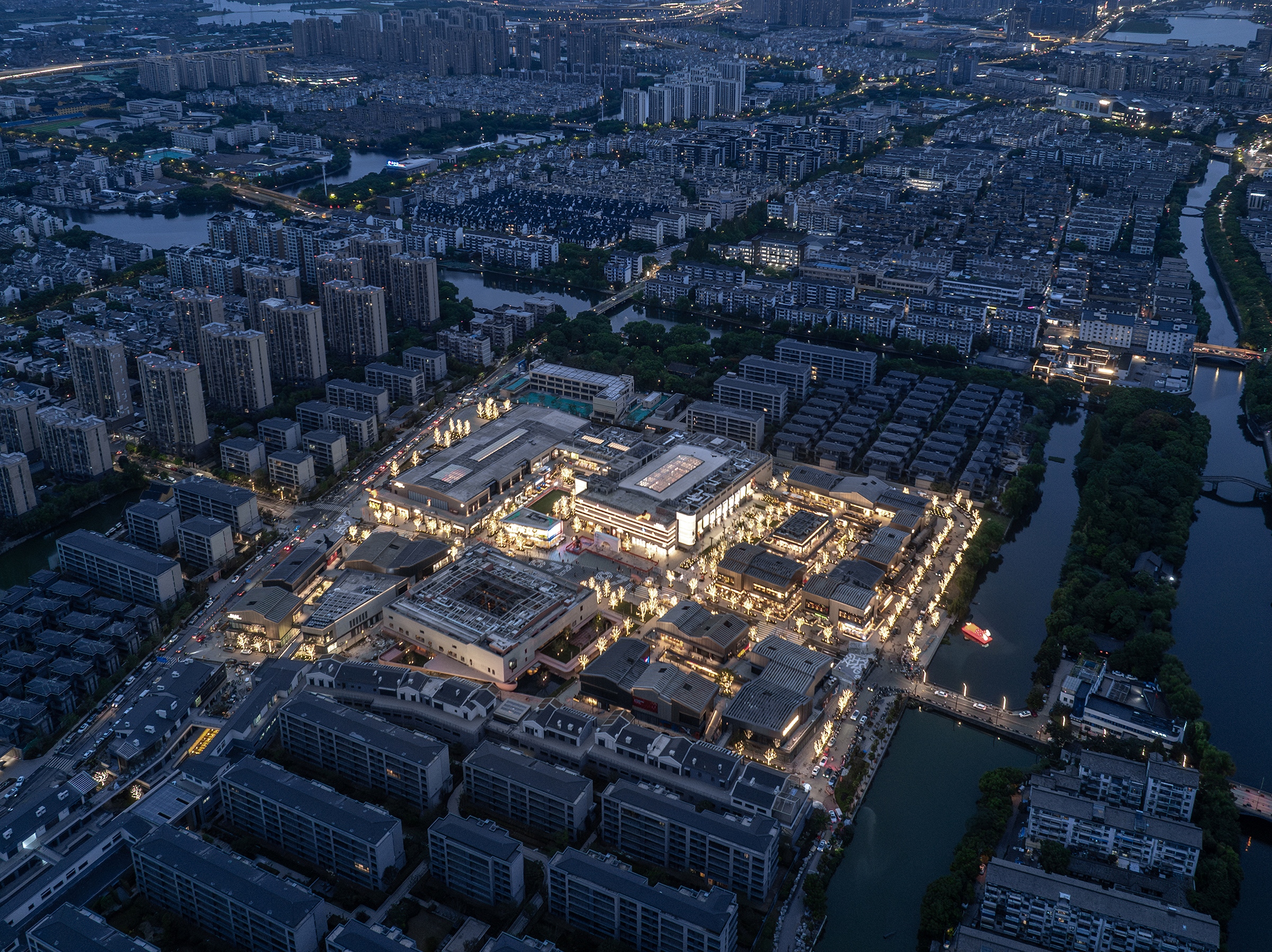
场地总体规划
场地内所保留的3个厂房之间布局较为分散,A、B厂房间距长达60米,加之周边原有建筑悉数拆除余留下的空白,为步行体验带来挑战。如何重新梳理体量庞大的工业遗存,打造出既适宜步行、动线清晰,又具有空间连贯性和场地完整性的规划,是设计团队面临的首要任务。
The layout of the 3 preserved factory buildings is relatively dispersed, with a gap of up to 60m between Factories A and B. Additionally, the cleared surroundings resulted in empty spaces that challenge the pedestrian experience. Kokaistudios’ primary task was to reinterpret the massive industrial heritage, in a way that not only improves walkability and circulation but also maintains coherence and integrity across the site.
建筑师以打造多元公共空间的角度破题,将公共空间巧妙地划分为三个层次:首先是占据核心地带的中央广场,其次是新建三个建筑组团中所围合的内庭院,以及A与C厂房中精心设计的中庭空间。
The design approach focused on creating a network of public spaces at 3 levels: a central square at the core; enclosed courtyards within 3 newly constructed villages; meticulously crafted atriums in Factories A and C.



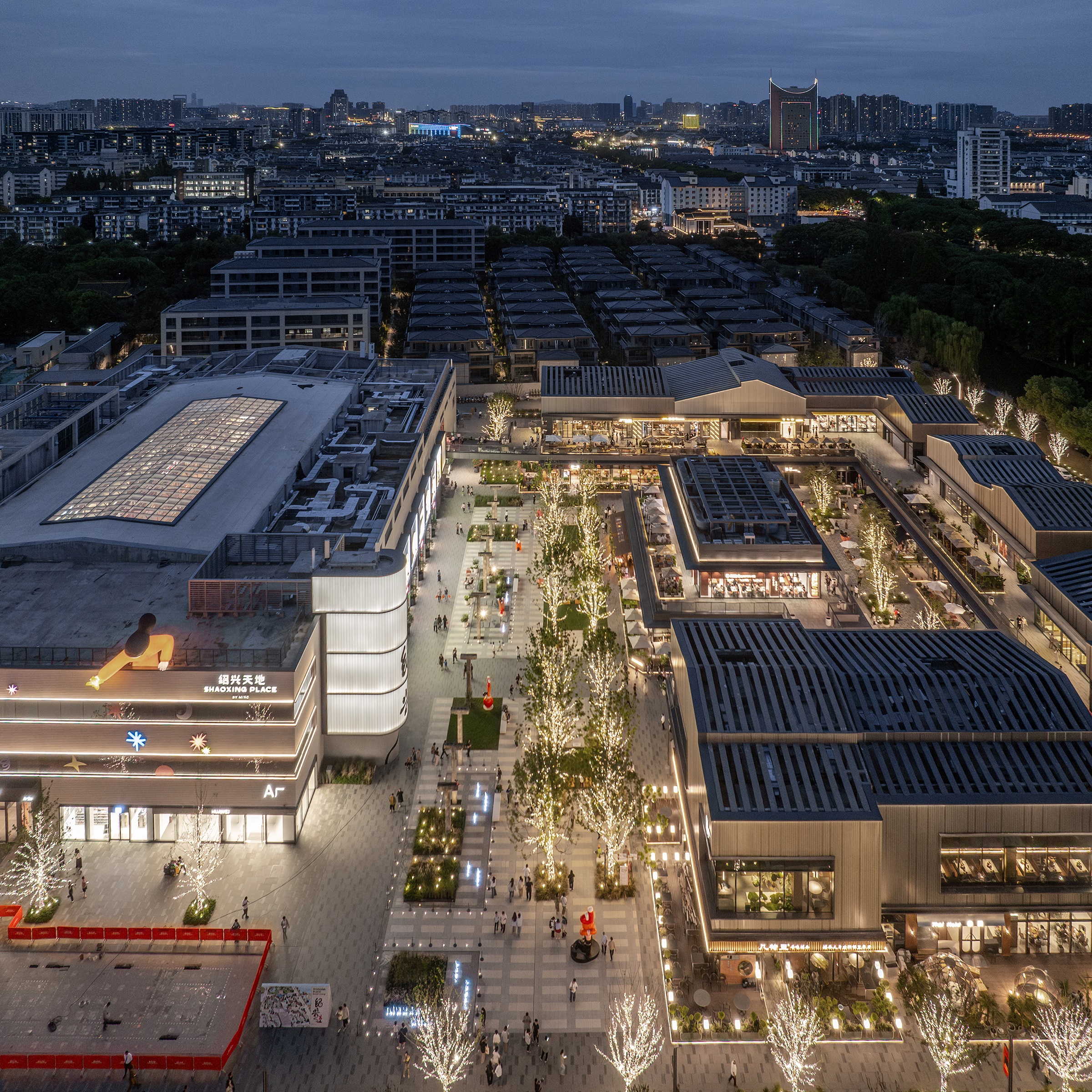
此外,团队还精确梳理了场地功能分区与周边环境的关系。设计注重保持东侧滨水界面的通透感,通过设置开口,使水岸景观与场地内部自然融合。餐饮区域被精心布置于滨水沿岸,同时配备室外庭院,为顾客提供了绝佳的观景体验。
Moreover, the team precisely defined the relationship between the site's functional zoning and the surrounding environment. The design emphasizes a sense of transparency along the eastern waterfront interface, incorporating openings that allow the waterfront landscape to naturally blend with space within the site. The dining area is strategically arranged along the waterfront featuring outdoor courtyards to enhance an excellent viewing experience.




为了进一步提升项目的商业活力,东西向的主轴线被打造成为一条充满活力的高街,为多元化的主力店铺入驻创造有利条件,从而确保了绍兴天地项目的独特魅力和商业价值。
To increase the project's commercial vibrancy, the East-West main axis has been transformed into a lively high-street, offering an ideal setting for diverse flagship stores, further ensuring SHAOXING PLACE’s commercial value and unique appeal.


旧厂房的建筑及空间改造

A厂房原作硅片制造使用,鉴于其生产流程对空气质量要求极为严苛,厂房中心区域设有一层2,000平方米的网格形通风楼板,由高约3.5米的立柱群支撑,形成了封闭的独立空间。如果单纯将此空间用于传统商业布局,不仅影响空间整体的通透与连贯,还会大大降低二层的利用效率。
Factory A was originally used for silicon wafer production, requiring stringent air quality controls. Therefore, its central section features a 2,000m2 grid-shaped ventilation floor supported by a cluster of 3.5m high columns, creating a closed independent space. Simply applying this space to traditional commercial layouts would not only disrupt the overall transparency but also significantly reduce the utilization efficiency on the second floor.
因此,设计团队创造性地保留了通风楼板的核心部分,而在建筑主体内围增设一圈环形走廊,与楼板核心区相连通。如此一来,中央的楼板宛如一座引人瞩目的视觉岛屿,既可作为展示秀场、T台等多种业态的舞台,又极大地提升了下方商业空间的价值与体验。
Kokaistudios innovatively retained the core section of this feature and introduced a circular corridor around the main structure, connecting it to the core section. As a result, the ventilation floor is transformed into a captivating visual island, serving as a versatile stage for exhibitions and fashion shows, adding value to the commercial space below.




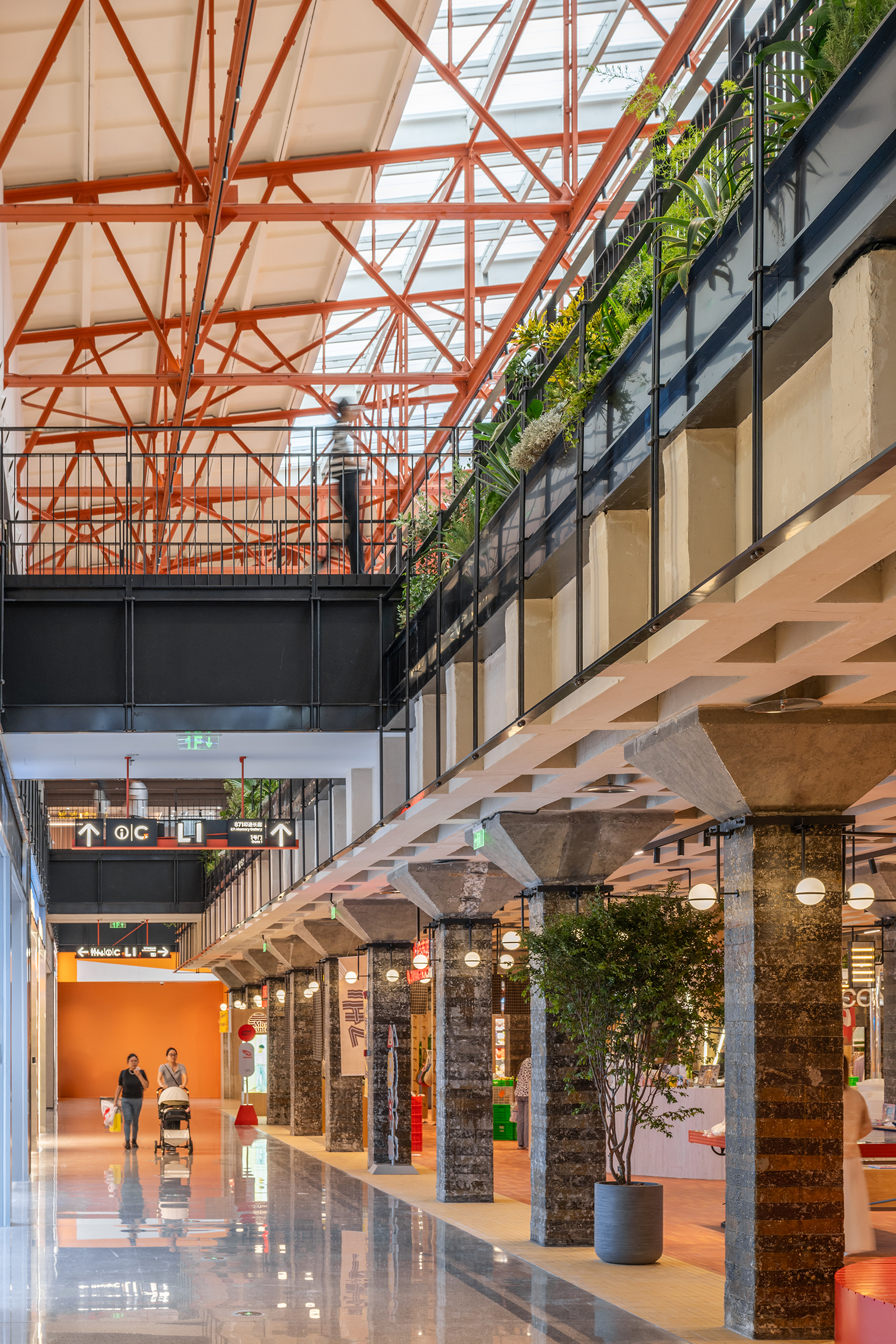

A厂房建筑南立面的水平带状长窗和两侧突出的圆弧形楼梯体现出鲜明的现代建筑风格特征。设计团队最大化地将这类特征保留,并将两个弧形楼梯改造为U型玻璃的灯塔,如今它们已成为这里的精神堡垒,唤起人们对旧时工业精神的回忆。
The southern facade of Factory A, with its horizontal strip windows and curved staircases, showcases modern architectural elements. The design team preserved these features, transforming the two curved staircases into U-shaped glass towers. Today, these structures serve as a symbolic beacon that evokes memories of the old industrial spirit.


C厂房在未改造前为框架结构单层工业厂房,它在高度和屋顶形式上与周边的两座厂房均有很大不同,也缺乏立面和结构特色。设计团队将平屋顶局部拆除并加建了一层,采用坡屋顶形式的同时引入大面积天窗,保证内部充足的自然光照。
Prior to the renovation, Factory C was a single-story industrial building with a plain facade and a frame structure, significantly differing in height and roof shape from the other two factories. Kokaistudios partially removed the flat roof and added a second floor, incorporating a sloped roof while introducing large skylights to ensure ample natural light.
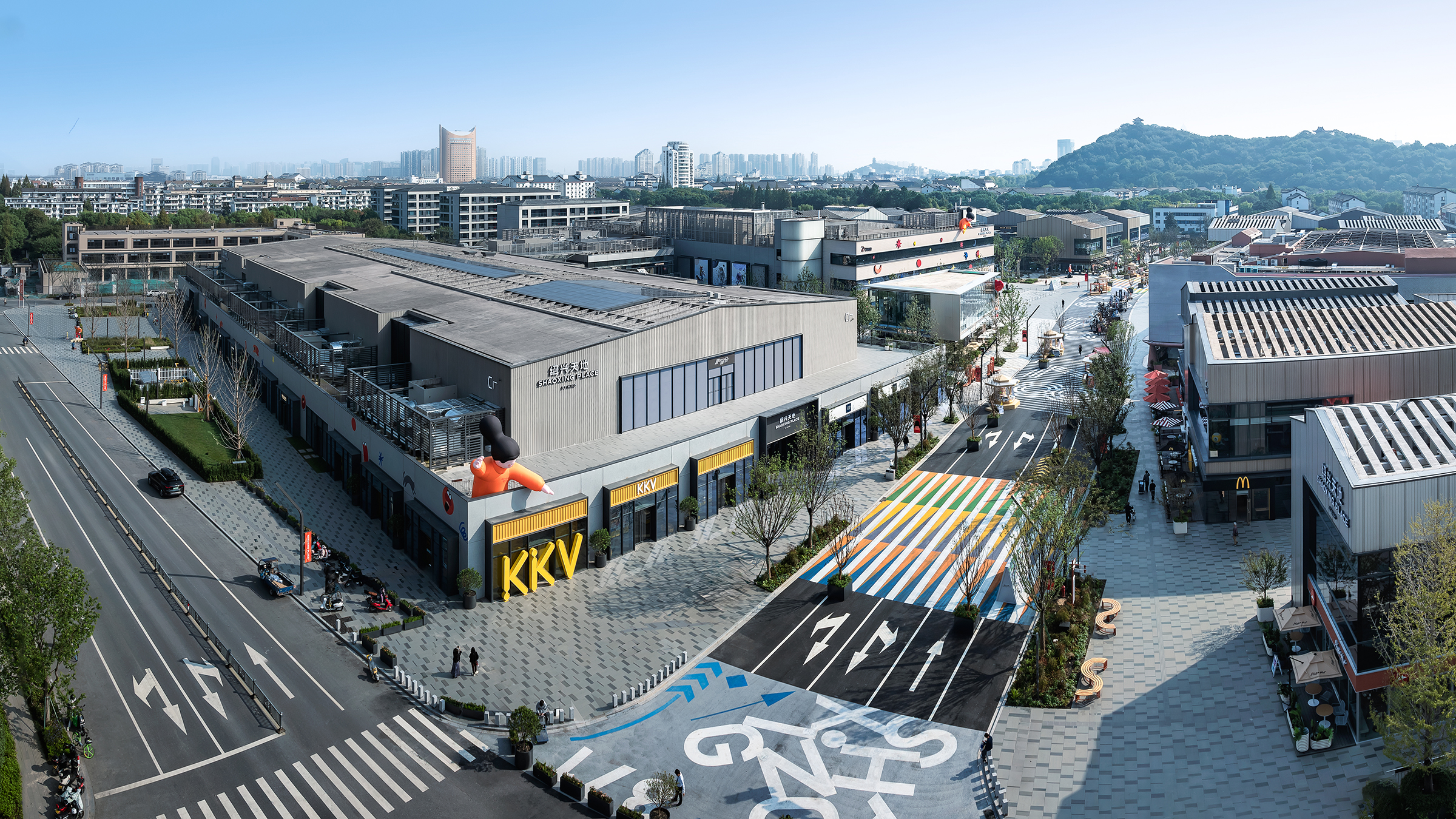
改造后的C厂房在体量和形态上呼应A、B两座厂房,新增的二层空间创造了极具可塑性的中庭空间。空间设计改造的概念为“house in house”:从建筑而言,C厂房本身是一个大的house形态;而增加的二层空间被天窗、延伸出的竖直侧板和翻折呈水平向的天花板围合成一个体量较小的house。两个形态一致而体量相异的空间相嵌套,呈现出富有几何趣味的设计语言。
The renovated Factory C now resonates in volume and form with Factory A and B, while the newly added second floor creates a highly versatile atrium space. The architectural interior renovation is centered around the idea of a “house in house”: the outer shell of the factory is a large house, while the added second floor, enclosed by skylights, vertical side panels, and a horizontally folded ceiling, forms a smaller “house” inside. This interplay of volumes creates a design language marked by geometric elegance.




新建建筑组团

为有效缩短A与C厂房之间的空间尺度感,设计在两者之间嵌入了一栋新建筑,这不仅实现了室内的直接连通,更在室外引入了大型台阶,显著增强了两栋建筑之间的围合感。台阶的设置不仅是物理连接的延伸,更成为了一个鼓励人们驻足休憩、放松身心的公共空间,从而丰富了整体环境的功能性与人文气息。
To bridge the gap between Factories A and C, a new building was inserted between them, providing indoor connectivity and outdoor stepped terraces, enhancing the sense of enclosure between the two structures. The steps serve not only as a physical connection but also as a public space that encourages people to pause, relax, and unwind, enriching the overall functionality and cultural atmosphere.

场地内另新增有三大建筑组团,织补并强化城市肌理。新建筑的灵感依然来自旧厂房的意向,设计将大体量切分为一个个“小厂房”的有机组合;在屋顶处理上摒弃了单一且冗长的坡屋顶结构,以打断和错动的手法让屋顶在高度上产生变化,保留传统的形象语言的同时让立面更加现代生动。
3 additional villages were constructed, weaving and reinforcing the urban fabric. The design draws inspiration from old factories and divides the large volume into an organic composition of smaller “factory-like” structures. It avoids a singular and monotonous sloped roof, instead employing a method of offsetting to create variations in height. This approach preserves the traditional architectural language while giving the facades a more modern and dynamic appearance.




随着城市发展与迭代更新,大量的工业遗存逐渐进入了存量创意营造的新阶段。如今的绍兴天地已蜕变为市民生活购物、文化交流、娱乐休闲的标志性目的地,而这次成功的改造实践不仅使曾经的871芯片厂保留了曾经的工业历史荣光,更在全新的时代与语境下迸发出新的活力,见证每一天繁荣鲜活的城市日常。
As urban development and iterations progress, a large number of industrial relics have entered a new phase of creative revitalization. Today, SHAOXING PLACE has transformed into a landmark destination for shopping, cultural engagement, and leisure activities. This successful renovation not only preserves the industrial heritage of the former 871 Chip Factory but also revitalizes it with new energy within a contemporary context, witnessing the vibrant and prosperous daily life of the city.
设计图纸 ▽

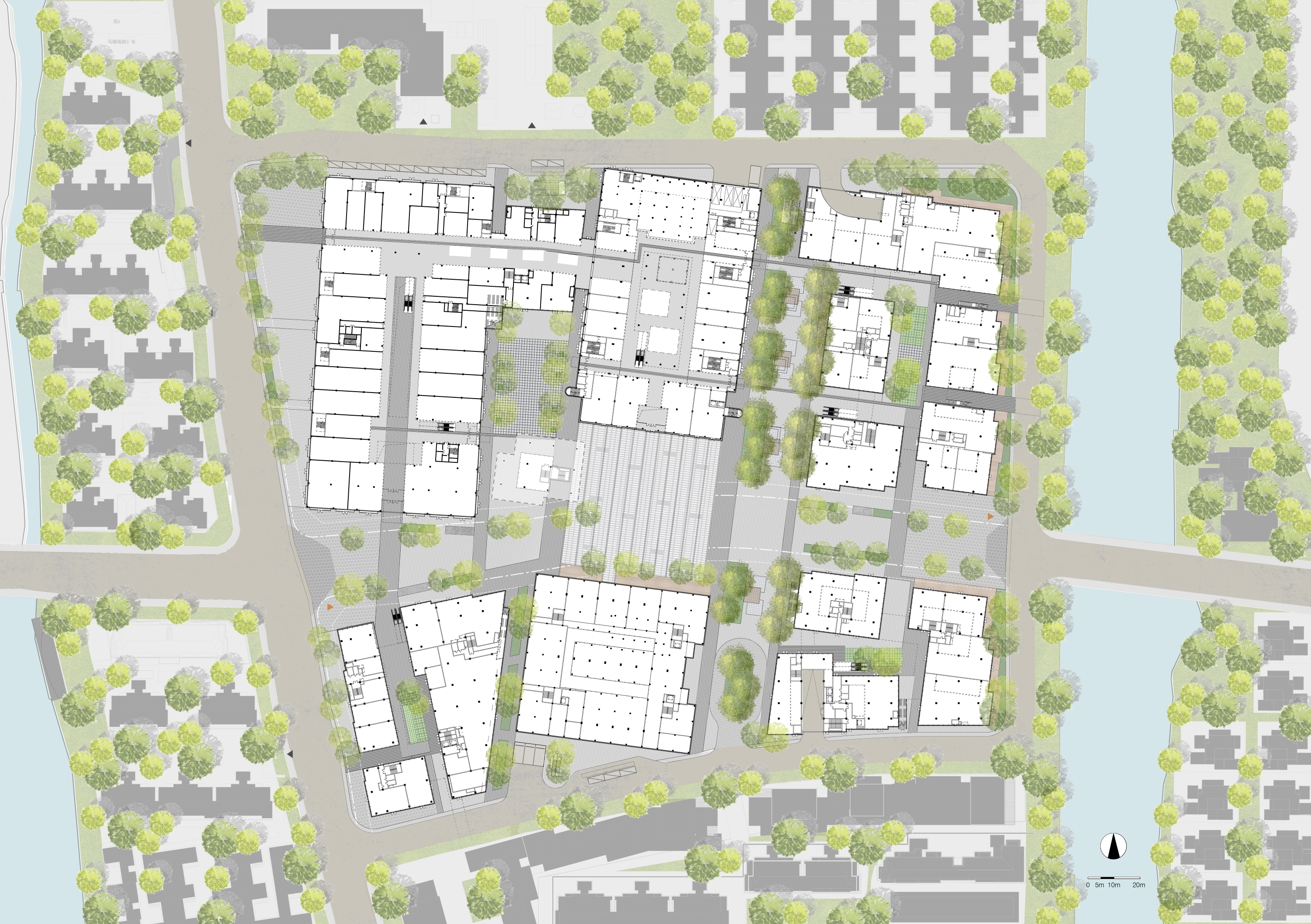






完整项目信息
项目名称:绍兴天地
地点:中国,浙江,绍兴
客户:华润置地
开业时间:2024年9月28日
建筑面积:6.1万平方米
设计单位:Kokaistudios
服务范围:总体规划及建筑概念设计、A+C厂房的建筑及室内空间改造、新建建筑的方案设计
首席建筑师:Filippo Gabbiani, Andrea Destefanis
建筑设计总监:Pietro Peyron,李伟
建筑设计团队:刘畅,季静凝,赵牧云,陶星彤,许晋,魏晓微,Eva Maria Paz Taibo,王芮,Andrea Antonucci,蒋菁菁,陆恬,金小婷
室内设计总监:王思昀
室内设计团队:张丛桑,崔越,王适远,蒋斌,常青,聂鹏飞,王思文,肖雪轲
新建建筑深化设计方案及落地执行:AICO
建筑施工图设计单位:中船第九设计研究院
景观顾问:翊象设计有限公司
幕墙顾问:海德工程咨询(北京)有限公司
室内灯光顾问:LEOX design partnership
摄影:张虔希,CreatAR Images
版权声明:本文由Kokaistudios授权发布。欢迎转发,禁止以有方编辑版本转载。
投稿邮箱:media@archiposition.com
上一篇:深圳市儿童医院龙华院区|筑博设计股份有限公司+Nickl&PartnerArchitektenAG
下一篇:西安之仓咖啡厅 / MOS木石设计